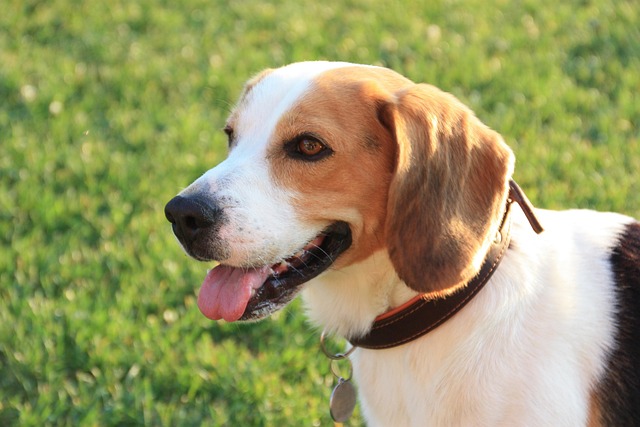
How long can a dog get vaccinated after recovering from a cold
As a dog owner, it’s heartbreaking to see your furry friend sniffling and sneezing through a cold. But once they’re on the mend, you might wonder:
Picture your Labrador Retriever eyeing your Thanksgiving pumpkin pie—those wagging tails might make you wonder: is pumpkin a harmless treat or a hidden risk? Let’s explore the science behind canine pumpkin consumption with real pet parent stories, blending nutritional facts with practical tips.
Nutritional benefits of pumpkin for dogs. Rich in soluble fiber (7g per 100g), pumpkin aids digestion—my neighbor’s Golden Retriever, Sadie, recovered from diarrhea after eating mashed pumpkin. "Fiber absorbs excess water in the intestines," her vet says. It’s also packed with vitamin A (12,000 IU per cup), supporting eye health in active breeds.
Weight management perks. Low in calories (26 kcal per 100g), pumpkin satisfies hunger—my friend’s overweight Pug, Bella, lost 2 pounds with pumpkin added to her kibble. "The fiber creates satiety without extra calories," a nutritionist notes. Replace up to 10% of daily food with pumpkin for safe weight loss.
Digestive issues relief. When my Labradoodle, Max, had constipation, his vet recommended 1 tablespoon of canned pumpkin daily. "Insoluble fiber in pumpkin skins adds bulk to stools," she explained. Within 48 hours, his bowel movements normalized. Use pure pumpkin, not pie filling with sugar or spices.
Pumpkin for sensitive stomachs. Bella’s sensitive tummy improved with pumpkin—"It soothes inflammation without irritating the gut," a dermatologist vet says. Start with 1 teaspoon for small dogs, gradually increasing. In the EU, pet foods with pumpkin must list ingredients by weight for transparency.

Risks of overfeeding pumpkin. Excess fiber causes gas—Max farted loudly after eating too much pumpkin. "More than 2 tablespoons daily for medium dogs can disrupt digestion," my vet warns. Monitor for bloating or diarrhea and reduce portions if symptoms appear.
Preparing pumpkin safely for dogs. Cook fresh pumpkin until soft—raw pumpkin is hard to digest. Sadie’s owner steams chunks and mashes them—"Raw flesh can cause intestinal blockages in small dogs," she says. Remove all seeds and stringy pulp; pumpkin seeds contain cucurbitacin, a mild toxin.
Seasonal feeding considerations. During Halloween, keep carved pumpkins out of reach—my neighbor’s puppy, Toby, ate a lit jack-o’-lantern’s flesh. "Candles pose fire risks, and decomposed pumpkin causes vomiting," her vet says. Offer plain, cooked pumpkin as a festive treat instead.
Pumpkin vs. commercial digestive aids. A study found pumpkin equally effective as fiber supplements—"Natural sources are gentler on sensitive systems," a researcher says. Max now gets pumpkin instead of pricey probiotic treats, saving his owner $20 monthly.
Breed-specific pumpkin needs. Large breeds like Great Danes can handle more pumpkin—"Their digestive tracts process fiber better," a trainer notes. Tiny breeds like Chihuahuas need just 1/2 teaspoon daily to avoid upset. Adjust portions based on your dog’s size and activity level.
Signs of pumpkin intolerance. If your dog vomits or refuses food after pumpkin, stop feeding immediately. Bella showed mild nausea once—"Some dogs lack enzymes for pumpkin fiber," her vet says. Switch to boiled sweet potatoes as an alternative.
Local pet feeding regulations. In the US, AAFCO allows pumpkin in complete diets; in Canada, it must comply with CFIA standards. "Ensure commercial pumpkin products are labeled for canine use," a lawyer friend reminds me. Imported pumpkin treats may not meet local safety codes.
Combining pumpkin with other foods. Mix pumpkin with plain yogurt for probiotic benefits—Max loves this combo. "The yogurt aids fiber digestion," my nutritionist says. Avoid pairing pumpkin with high-fat foods, which can cause pancreatitis.
Pumpkin as a training treat. My friend uses pumpkin puree in Kong toys—"It’s a healthy, long-lasting distraction," she says. Freeze pumpkin cubes for summer treats; Bella stays cool with pumpkin pops during heatwaves.
In essence, pumpkin can be a nutritious addition with caution. For Sadie, it’s a digestive hero; for Max, a low-calorie filler. "Treat pumpkin as a supplement, not a staple," my vet advises. With proper portioning and preparation, this humble vegetable can boost your dog’s health while satisfying their taste buds.

As a dog owner, it’s heartbreaking to see your furry friend sniffling and sneezing through a cold. But once they’re on the mend, you might wonder:

Watching your Labrador bound across the park is a thrill,but what if you notice their ribs showing a bit too much or they tire quickly on hikes?Building muscle isn't just about looks—it's crucial for your dog's joint health,stamina,and overall well-being.

Picture this: Your golden retriever, Max, just came back from a rainy walk in Central Park. He’s sneezing, his nose is runny, and he’s curled up shivering on his bed.

So you're scrambling some eggs for breakfast and those big, hopeful eyes are locked onto your plate. It happens to every dog owner sooner or later.

We’ve all buried our noses in that stinky fur after a rainy walk or noticed an unpleasant smell lingering near your dog’s bed.

When it comes to Pomeranians and their eating habits, their tiny stature doesn’t mean they lack strong opinions about food.